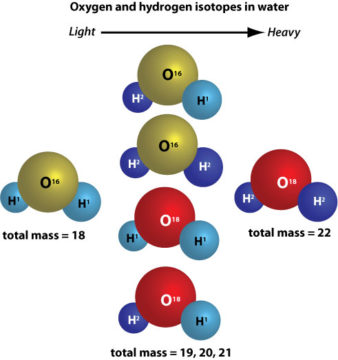Introduction of stable water isotopes to the UK Earth System Model (UKESM2)
- Start date
- 1 March, 2020
- End date
- 31 March, 2026
We will add water tracers (including stable water isotopes) to the UK Earth System Model (UKESM2) which will track through the model’s hydrological cycle. This work started under the EU Tipping Points in the Earth System (TiPES) project (https://www.tipes.dk/) and is now part of a BAS National Capability International research programme, Surface Fluxes in Antarctica (SURFEIT – https://www.bas.ac.uk/project/surfeit/).
There are many benefits for including water tracers/isotopes in an earth system model for both present day and palaeoclimate simulations. These include:
1. Assessment of relationships between isotopic concentrations and climate variables
Measurements of stable water isotopic content in ice cores can provide important long-term records of past climate changes. For example, temperature records over glacial-interglacial cycles have been inferred from the isotopic content of ice cores drilled in Antarctica. In order to infer climate records from isotopic ice core measurements, a relationship between the two quantities needs to be established. This is typically calculated using the spatial correlations of present day observations. Climate model simulations, that include water isotopes, allow these relationships to be better investigated and understood, thus, enhancing our ability to produce accurate climate records.
2. Palaeoclimate model evaluation
Including water isotopes in model simulations of past climates allows the model output to be compared to ice core measurements, which provides a method for model evaluation.
3. Enhanced understanding of a model’s hydrological cycle
Another value of adding water tracers and isotopes to a climate model is that they can be used to gain a better understanding of some of the complex hydrological processes within the model. For example, non-isotopic water tracers can be used to track water originating from a specified source region, allowing water pathways to be investigated in an atmosphere model.

(https://www.usgs.gov/media/images/water-isotopes-diagram).
A water molecule consists of two hydrogen atoms and one oxygen atom. ‘Water isotopes’ are water molecules that contain isotopes of hydrogen or oxygen. As the diagram on the left shows, the different combination of stable isotopes used to form the water molecule causes the molecular mass to vary from 18 to 22. Note, stable isotopes do not decay over time.
- The first stage of this work is to add a water tracer to the atmosphere and land surface component models. The tracer will track water through the hydrological cycle of the models.
- The development will be made so that the model can run with a number of different water tracers.
- Isotopic fractionation processes will then be added to allow a water tracer to become a stable water isotope.
- Water tracers/isotopes will also be added to the ocean and sea ice model components.
Update on progress:
- The water tracer code for the atmosphere and land surface components is now complete and being used to investigate sources of precipitation in the atmosphere model.
- Isotopic fractionation processes are currently being added to the atmosphere and land components. We anticipate completion of this stage later in 2025.
External collaborators:
Merve Gorguner – University of Bristol
Simon Wilson – National Centre for Atmospheric Science
Jeff Ridley – Met Office
Paul Valdes – University of Bristol
Grenville Lister – National Centre for Atmospheric Science
